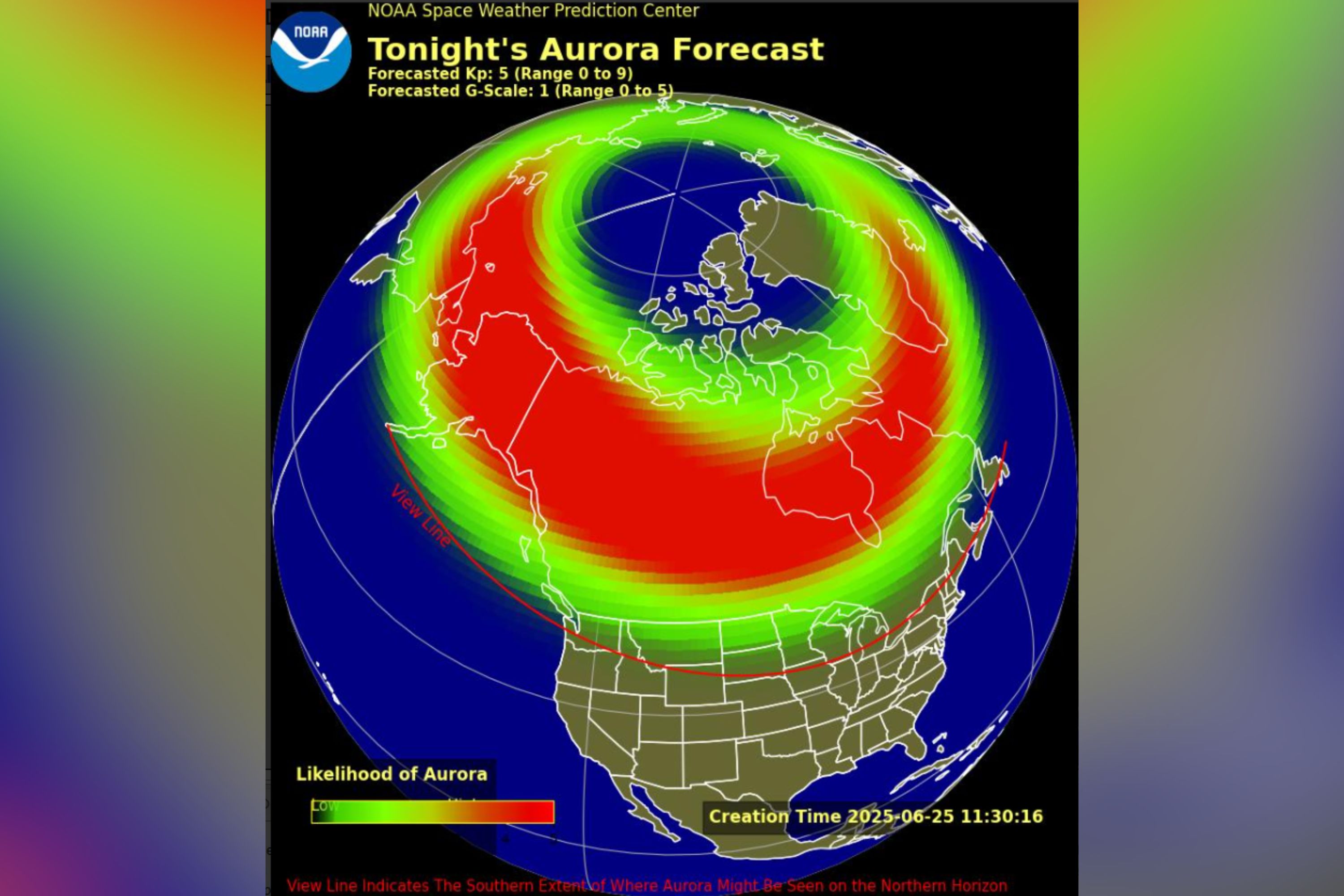Americans in multiple states may have a chance to see the northern lights on Wednesday.According to a forecast from the National Oceanic and Atmospheric Administration’s Space Weather Prediction Center (SWPC), the aurora borealis could be visible in as many as 14 states tonight.Why It MattersWhile NOAA’s forecast doesn’t ensure a sighting, it offers a somewhat rare chance for residents of states ranging from Washington to Maine to witness the northern lights.What To KnowAccording to the SWPC’s viewline forecast, the aurora borealis may be visible over parts of Alaska, Washington, Oregon, Idaho, Montana, Wyoming, South Dakota, Iowa, Wisconsin, Michigan, New York, Vermont, New Hampshire and Maine.The SWPC explains that the northern lights occur when electrons collide with the upper parts of Earth’s atmosphere. These electrons get a boost of energy in a region of Earth’s magnetic field on the night side of the planet.Once energized, they travel along the magnetic field toward the polar areas. When they hit gases like oxygen and nitrogen high in the sky, they pass their energy to those gases, which “excites” them. As the gases calm back down, they release that energy as glowing light.During “large” events, the aurora may be visible as far south as parts of the U.S., Europe, and Asia. In “very large” events, it can be seen even farther away from the polar regions.In addition to clear skies, visibility depends on variables such as low light pollution and the intensity of the aurora at any given time. Even in areas within the forecast’s visibility band, cloud cover or city lights could prevent a sighting.What People Are SayingSpace Weather Prediction Center operations chief Mike Bettwy previously told Newsweek: “General tips include viewing late at night, away from city lights, and taking pictures with your iPhone or other technology since the aurora may be visible on those devices even though the human eye may not always detect it.”The Space Weather Prediction Center says: “The aurora is not visible during daylight hours. The aurora does not need to be directly overhead but can be observed from as much as 1000 km away when the aurora is bright and if conditions are right.”What Happens NextThe SWPC issues frequent forecast updates. Anyone hoping to catch a glimpse of the aurora borealis should consult the latest outlook and head to dark, clear spots with a good view of the northern horizon.
